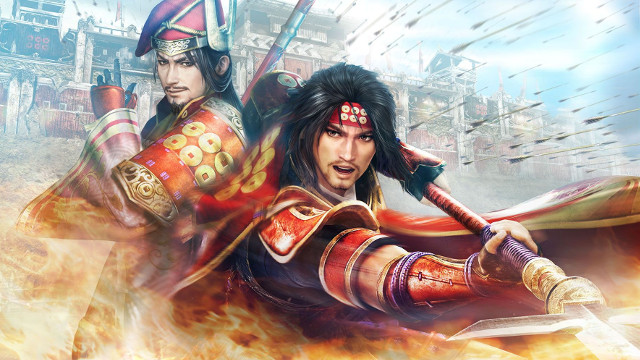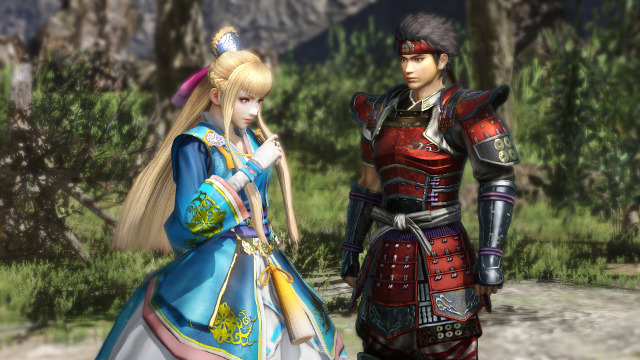Omega Force’s most popular series Dynasty Warriors has a ton of spin-offs, but Samurai Warriors: Spirit of Sanada is special in that it is a spin-off of a spin-off. For those that don’t know, Dynasty Warriors is the original Musou-style game in which you mow down hundreds upon hundreds of enemies on a battlefield.
Samurai Warriors takes that same gameplay, tweaks it, and applies it to the Sengoku (Warring States) period of Japan that occurred from approximately 1467-1603. Spirit of Sanada makes further adjustments, swapping the multiple perspectives and huge cast of playable characters for something far more personal. It dives deep into the broad Sengoku era and focuses on one specific clan involved in the battles. Although clearly serious about its historical references, is it a good game? Let’s jump right into battle.
Family Matters

The story begins partway through this important historical period in the year 1567 in the home of the Takeda clan, a major player in the wars. Within the Takeda army lies the extremely loyal Sanada clan that are the actual focal point of the story. Their tale begins on the eve of the famed Battle of Kawanakajima, with you playing as Masayuki Sanada, a retainer to the Takeda clan. The differences between this title and its predecessors is immediately apparent in its storytelling format.
Instead of focusing on the grand scheme of the battles, it zooms in greatly on just the issues that Masayuki and his family cares about. Keeping his clan, town, and lords safe is all that matters to him, even noticeable in the battles themselves. Most of the story beats during fights are presented in text form at the bottom of the screen. Solely featuring the original Japanese audio causes you to have to glance downwards frequently in the midst of the action—unless, of course, you know the language—, something that both breaks the action and can set you up for fatal mistakes.
Perhaps unintentionally yet ironically, the localization decision to not include an English dubbing adds to the protagonist’s character. Masayuki, and the later heroes you’ll play as, only care about what’s right in front of them. At the same time, this can be a huge setback for players that do care about the overarching story. There are times you can easily miss an ally crying out for assistance or even a key person dying simply because it was presented in such a way that you have to pick between keeping yourself alive and following along with plot developments.
Outside of battles, the story goes uninterrupted; a great thing considering it is a tale you won’t want to miss. Death, betrayal, tragedy, romance, and more put you in the sandals of these famous historical figures, while teaching you a little bit more about Japanese history. At times, it can seem very melodramatic and soap opera-ish, but the Japanese audio shines in the talented cast. From the sweet-sounding, dangerous females to the deep, bellowing males, Spirit of Sanada is filled to the brim with that signature over-the-top anime-style acting the Musou games are known for.
One Versus 1000

This anime-likeness carries over into the action, too. Battles are comprised of you towering over thousands upon thousands of nameless enemies that are nothing more than ants to be stomped on, with enemy officers that act as the real challenge sprinkled throughout. Gameplay is the classic hack-and-slash fare that any Musou fan is used to.
A combination of the two main attack buttons will unleash various combos ranging from horizontal sweeps for creating breathing room to dashing through opponents in a line directly in front of you. You are able to activate the superpowered Musou mode once you’ve powered up enough through killing foes and taking damage, and blocking and dodging are useful for defensive methods.
Though Spirit of Sanada does feature familiar gameplay, it is nowhere near the level of the main series when it comes to its playable characters. You will employ a much smaller cast of characters that are all relative to the intimately designed story. That said, each of the characters are varied greatly and use some rather unique and hilarious methods of killing their foes. Masayuki, in particular, wields a gigantic banner that can be swung at enemies at a moderate speed, while his lord Shingen Takeda flaps around a fan in a slower but more powerful motion. Others include a kanzashi (hair ornament)-wielding concubine, a dual-wielding ninja, and more.
During most major battles, you aren’t restricted to using one specific person, as you are able to switch on the fly with just the press of a button. This adds an element of strategy, as you can have your team in different locations tackling multiple objectives at once. Even when you aren’t directly controlling someone, the game’s capable AI will work towards completing goals.
Unfortunately, the actual objectives you’ll be doing over the course of the game’s 48 year span are a rehash of the same old “kill this person, defend this person”, and that’s about it. The far more interesting moments like surviving for a period of time against endless enemies are not often enough. Despite the lack of mission variety, none of the battles overstay their welcome, and are typically broken up across multiple stages that can be done whenever you want.
Taking a Break

If you want a break from the battles, there are several distractions that will keep you occupied. All of the other game modes are found in the hub town you start in, instead of a menu screen like some Musou games. By running around and talking to various NPC’s, you can do side-quests, shop, fish, farm, give gifts to allies, and more. The fishing and farming mini-games are particularly fun for a while, with timed rewards and resets that encourage engaging in them between battles.
Spirit of Sanada has a useful friendship system similar to a Fire Emblem or Persona game, where exchanging gifts and completing tasks will increase an ally’s friendship with you, unlocking additional scenes, items, and Sanada Coins. These new coins, of which you can have six at one time, are used in battle for additional help. These Stratagems, as the bonuses are called, will slow down the enemy, destroy a bridge, and more depending on the battlefield you are on.
Having the ability to switch between heroes at any time can make it easy to rely on one or two in particular and have the others fall behind level-wise, so the dojo in town is a nice workaround for training your team. Another way of gaining experience or materials for upgrading your weapons is exploring the countryside. There are several different explorable locations that each have their own objectives like gathering materials and side-quests that are beneficial to your team. These areas are more peaceful and contain far less enemies than the normal battlefield, so it is ideal for anyone wanting less stressful gameplay.
The locations themselves do not vary much in terms of design and style, with most locales looking very similar to one another. However, this is just one symptom of a larger problem with the graphics. Spirit of Sanada is built on the same engine with the same graphics as 2014’s Samurai Warriors 4. Those graphics didn’t exactly turn heads three years ago, and it’s even more noticeable now. Main characters look alright, but environments, NPC’s, and the color palette all look bland and extremely outdated.
Conclusion
Samurai Warriors: Spirit of Sanada caters to a specific audience that is looking for something different in terms of story and characters compared to other Musou games. A heartfelt, emotional tale of friendship, family, and politics provide an intimate counterpart to its mainline games. This difference carries over to its smaller pool of playable characters, each varied and employing the classic Musou hack and slash gameplay.
Battles are massive multi-stage affairs with thousands of enemies onscreen, and even when you’re bored with fighting, there is a breadth of additional content to enjoy. Whether you’re engaging in the game’s encyclopedia or exploring the countryside and mini-games, there is a lot to consume for the history buffs and Musou fans out there. That’s if you can get past the graphics and engine that–much like the story–are remnants of an era bygone.
-
A Japanese history lover’s dream
-
Great additional content
-
Focused, intimate story
-
Outdated graphics
-
Recycled objectives







